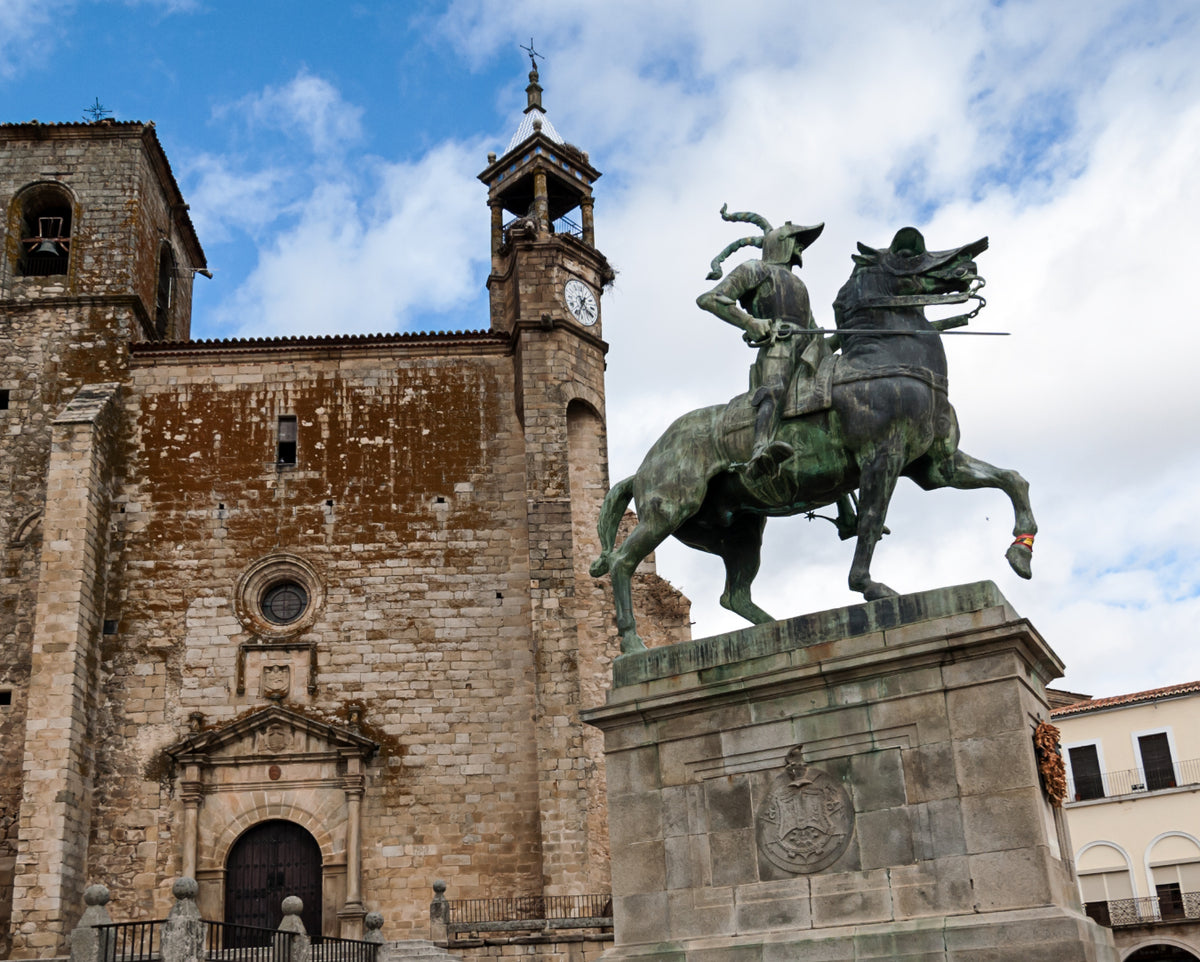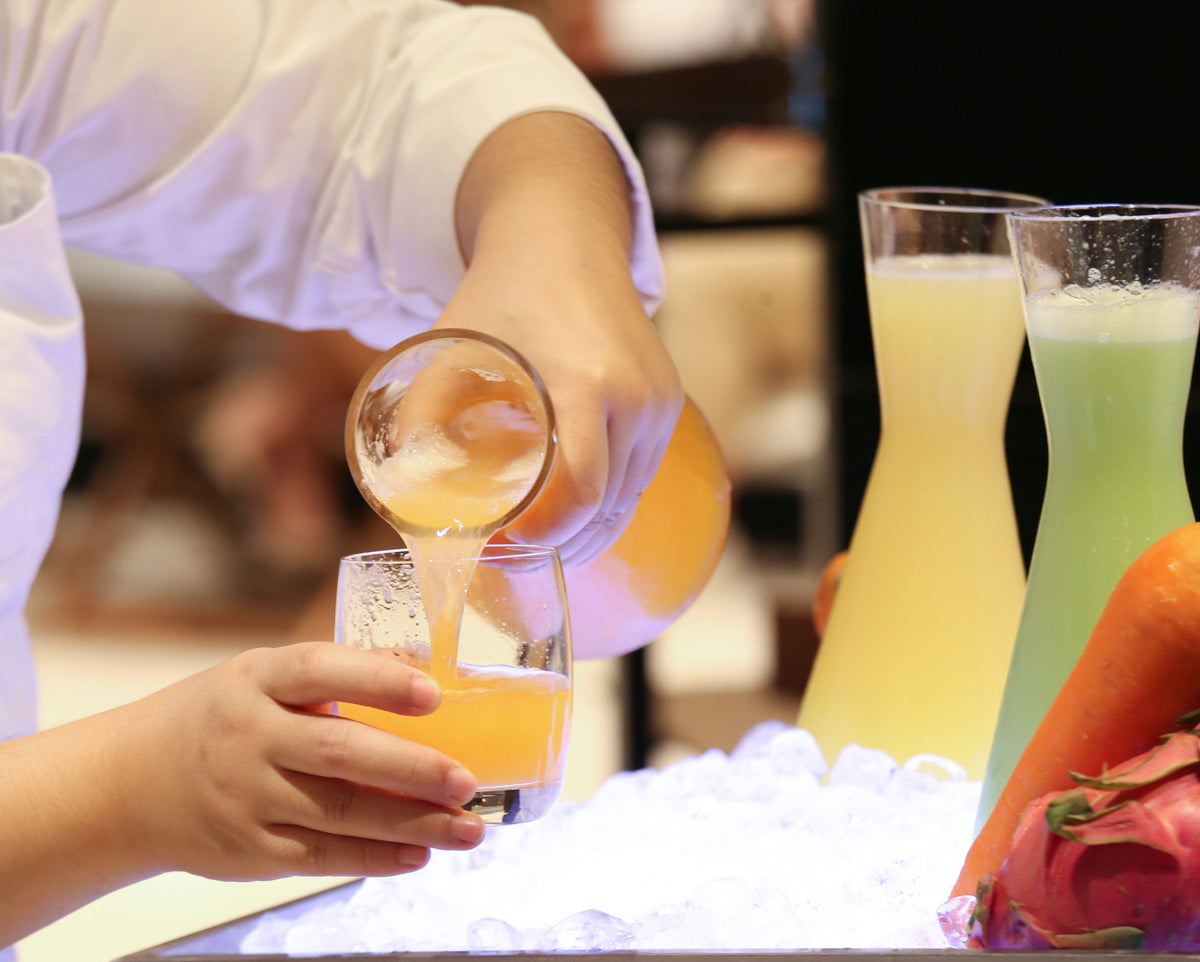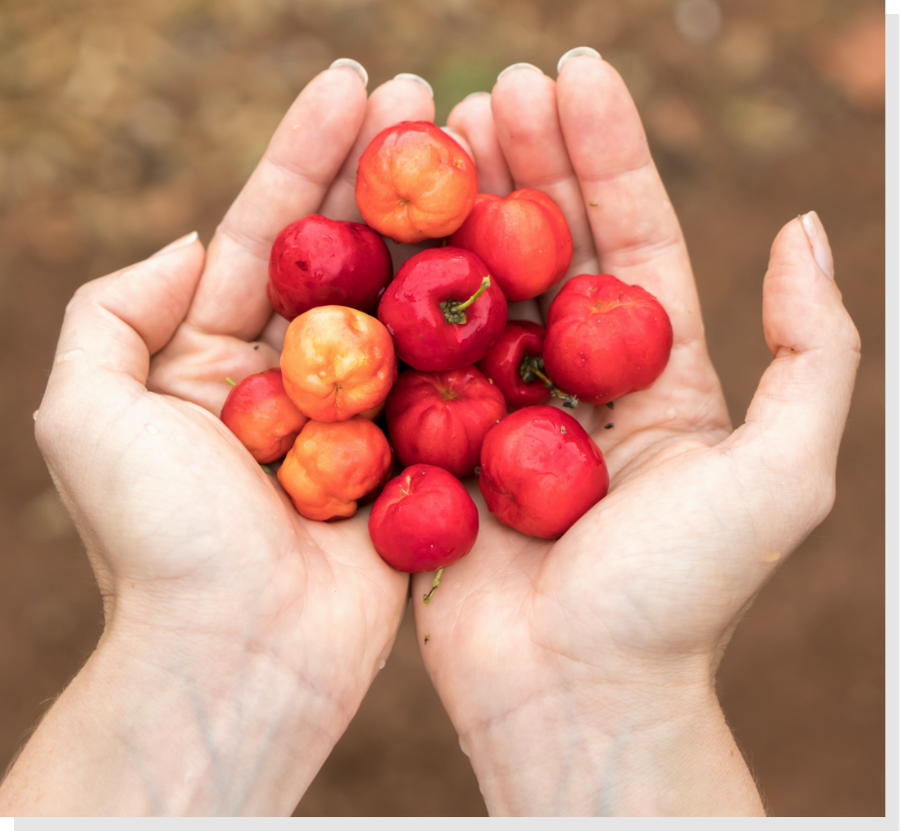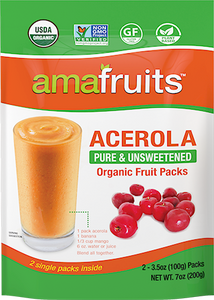Acerola
King of vitamin c
Acerola (pronounced ah-sir-oh-la) is a small, cherry-like fruit that grows on large, dense shrubs throughout the tropics of South and Central America, as well as the Caribbean. Often called the “Amazon cherry” or “Barbados cherry”, its taste ranges from tart to semi-sweet with the Brazilian varieties being noted as the richest and sweetest. Each serving of acerola contains up to 30 times as much Vitamin C as an orange!

Benefits of Acerola
-
Has up to 30 times the Vitamin C of an orange.
-
Contains mineral salts, such as iron, calcium, and phosphorous
-
A healthy amount of polyphenols.
-
Contains essential vitamins such as Vitamin A, Vitamins B1(thiamin), B2 (riboflavin) and B3 (niacin), and Vitamin E.
-
Contains additional minerals including magnesium, potassium, selenium, copper, manganese, and zinc.
-
Immunity supporting plant sterols.




Harvesting Acerola

Acerola grows in the wild and through cultivation throughout Brazil, primarily in the northeastern regions. The fruit grows on short stems in shrub-like trees around 36 meters (1019 feet) in height. The diameter and weight of acerola fruit varies between 24 cm and 515 g, respectively. The fruit has a thin skin that may range from reddish yellow to deep red when ripe.
Acerola fruits are usually picked manually during the coolest part of the early morning and must be handled with care, since they bruise easily. Amafruits only harvests ripe, organic acerola then purees the fruit and strains out the seeds. We add nothing to the fruit. The result is a smooth, very tangy pulp that will add serious zip to your smoothies and juices.

In the Amazon region of Brazil, there are approximately 35 harvest periods per year. When grown from seed, the acerola tree can produce fruit in the 2nd or 3rd year, while cuttings may fruit in the first year. Older trees can yield from 30 to 60 pounds of fruit, and productivity will generally begin to level off or decline after 15 or 20 years of good growth.
The largest acerola harvests take place in Brazil, but plantings of the fruit are increasing worldwide. The rise in plantings is due, in part, to the fruit’s increased use in producing vitamin C supplements.









